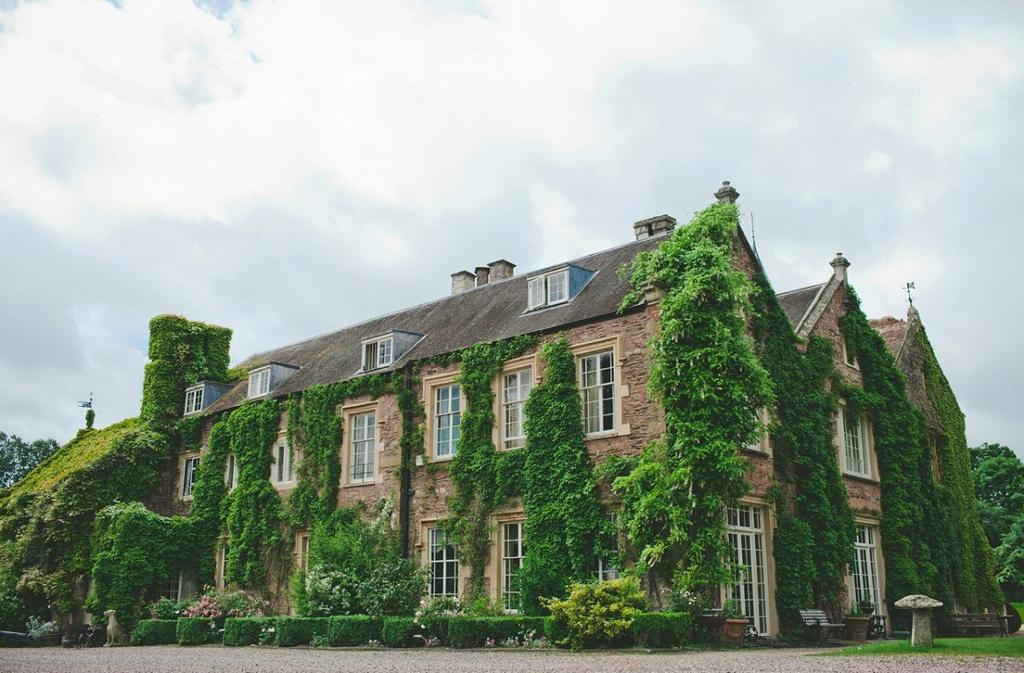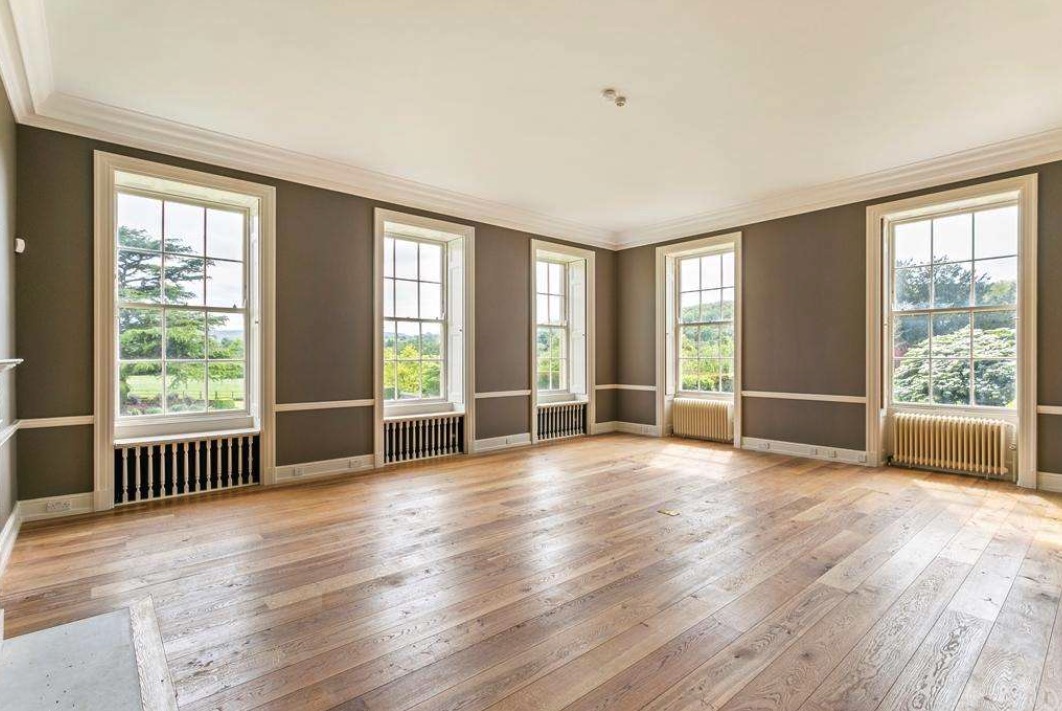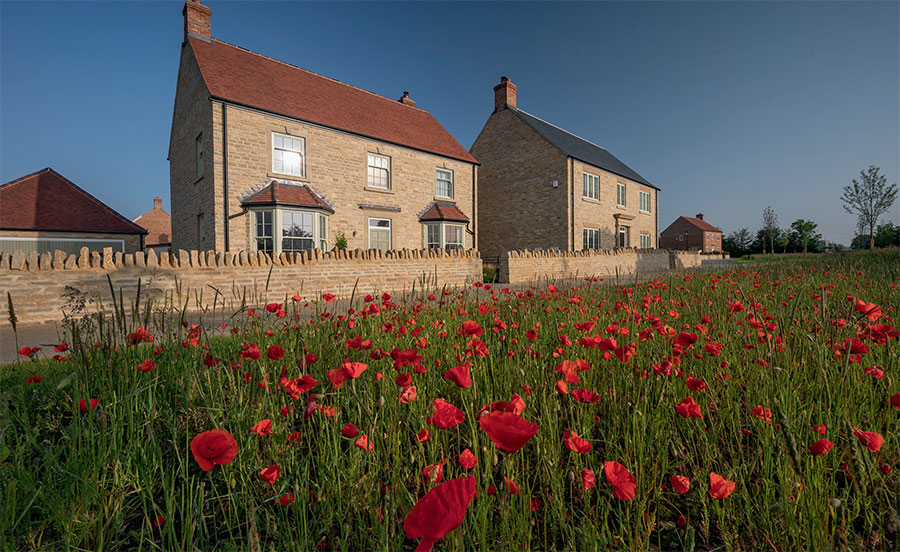The easy way to live on one of Britain's great country estates? How the country house rental market started booming
Lucy Denton examines the highs and lows of renting an estate property.


'You would have to be a cricket lover to take on this property,’ says Sarah Roué, director at Savills’ rural division in Exeter ‘because every Sunday you will look directly out onto a cricket match.’ This is aptly named Cricket House, a handsome cottage set right against the pitch boundary in the deer park of the ancient Boconnoc estate in Cornwall, formerly the seat of the Pitt family. An unusual, rustic dwelling, ‘a quirky, historic building in a very special location,’ continues Mrs Roué, ‘it will attract a very different sort of interest’.
The market for tenanted homes on estate domains is currently riding very high — so much so, in fact, that Cricket House has now been rented out. It's been buoyed by the exodus from London during the pandemic and the machinations of the buying sector, which are slowing down transactions.

‘The competition for estate lettings is extremely hot,’ explains Rob Jones-Davies, a director of the RJD Consultancy. ‘You’ve got to find a property, move fast, and then expect to be scrutinised more diligently than for a standard rental.’
Living within the precincts of a country-house estate is a desirable prospect, increasingly so, as current trends would suggest—and the cachet derived from a rich historic provenance, a robust sense of identity (think Cowdray’s yellow window frames in West Sussex), good-looking buildings and scenic backdrops only adds to the allure.
Much depends on the owner, their commercial interests and diversification of the estate, but they tend to pursue a more proactive approach than private landlords and the benefits for both parties can be considerable, promoting long-term occupancy, an interactive community and access to a range of facilities not on offer elsewhere. Some estates provide gardening services, others discounted firewood; most have building-maintenance staff on call and some put on events — such as for the recent jubilee celebrations.

At the moment, what might be available to let could be more accessible than prohibitively expensive equivalents to buy. Grade II-listed Beamsley Hall, for example, is a striking mini mansion on the Duke of Devonshire’s Bolton Abbey estate in North Yorkshire. Outwardly a 19th-century rebuild, it actually contains evidence of Norman origins and 16th-century fabric, with deeds dating back to 1400.
‘This is an exceptional property in one of the most beautiful places in Britain,’ says estate manager David Barrett. Its recent re-emergence on the rental market with Savills for £9,500 pcm — which includes a gardener — follows investment of time and money upgrading the structure.
Exquisite houses, the beauty of Nature, and how to get the most from your life, straight to your inbox.

Estate landlords often put in considerable effort to maintain what is usually an older stock of housing, going well beyond the norm in management standards — ‘we also clean gutters and sweep chimneys,’ adds Mr Barrett, ‘and the estate assumes much of the day-to-day maintenance, which, by rights, would fall to the responsibility of the tenant’.
However, there are downsides. Less and less might be done the longer a tenant stays. ‘Sometimes, properties can be tired,’ warns Alice Protheroe, director and head of Cotswolds lettings at Strutt & Parker, ‘and it is not until someone leaves that the estate might replace or upgrade.’
Refurbishing what is often a substantial property holding is a serious investment, with landlords bearing the financial load for the upkeep of historic buildings, which are often less well insulated, usually with single glazing, then encumbered with modern energy-efficiency requirements, so be aware of a landowner’s long-term plans.
Roger Tempest, the custodian of the Broughton Hall estate in North Yorkshire, has limited his residential lettings, cautioning that, at times, returns are low for landlords, especially after taking into account maintenance costs, including rewiring, reheating and reroofing. ‘It’s not necessarily a great business,’ he says, although rentals ‘are part of the social provision on the estates who don’t want to sell.’

If some estates are restricting lettings, others are now engaging in the socially responsible approach, ingeniously being pursued at Blenheim Palace, where a pioneering legacy development, Park View, comprises brand-new houses to buy alongside dozens of both market and affordable rents, an arrangement made possible via collaboration with West Oxfordshire Council.
Each house designed by Hugh Petter and the team at Adam Architecture acknowledges the Woodstock aesthetics, with a varied palette of materials and colours, avoiding bland uniformity, and the work revives traditional skills, including dry-stone walling.

This project, which should be completed within the next two years, ‘is to support the local community’, says Gemma Else, Blenheim Palace’s marketing manager. ‘We have already been in consultation with other estates to consider our blueprint of what has been done, and successfully achieved.’
The joys of renting on an estate
- Each estate has individual character and is linked to the community. Estates are likely to look for long-term tenants who might work locally, could contribute to the social environment, including populating rural schools, and care for often older properties and gardens
- An estate landlord is usually: less absentee, more hands-on and more proactive than ‘conventional’ private lettings; more likely to consider changes to properties for mutual benefit; relaxed about pet ownership
- Although demand for estate properties is still very high post-pandemic — many properties could be ‘let several times over’, especially within range of London — once you’re in, you can hope to stay put for a while
- Most estates adopt the conventional assured shorthold tenancy agreements, although tenants could be asked to sign up for two years initially, sometimes longer, to ensure continuity
Country Life is unlike any other magazine: the only glossy weekly on the newsstand and the only magazine that has been guest-edited by His Majesty The King not once, but twice. It is a celebration of modern rural life and all its diverse joys and pleasures — that was first published in Queen Victoria's Diamond Jubilee year. Our eclectic mixture of witty and informative content — from the most up-to-date property news and commentary and a coveted glimpse inside some of the UK's best houses and gardens, to gardening, the arts and interior design, written by experts in their field — still cannot be found in print or online, anywhere else.

